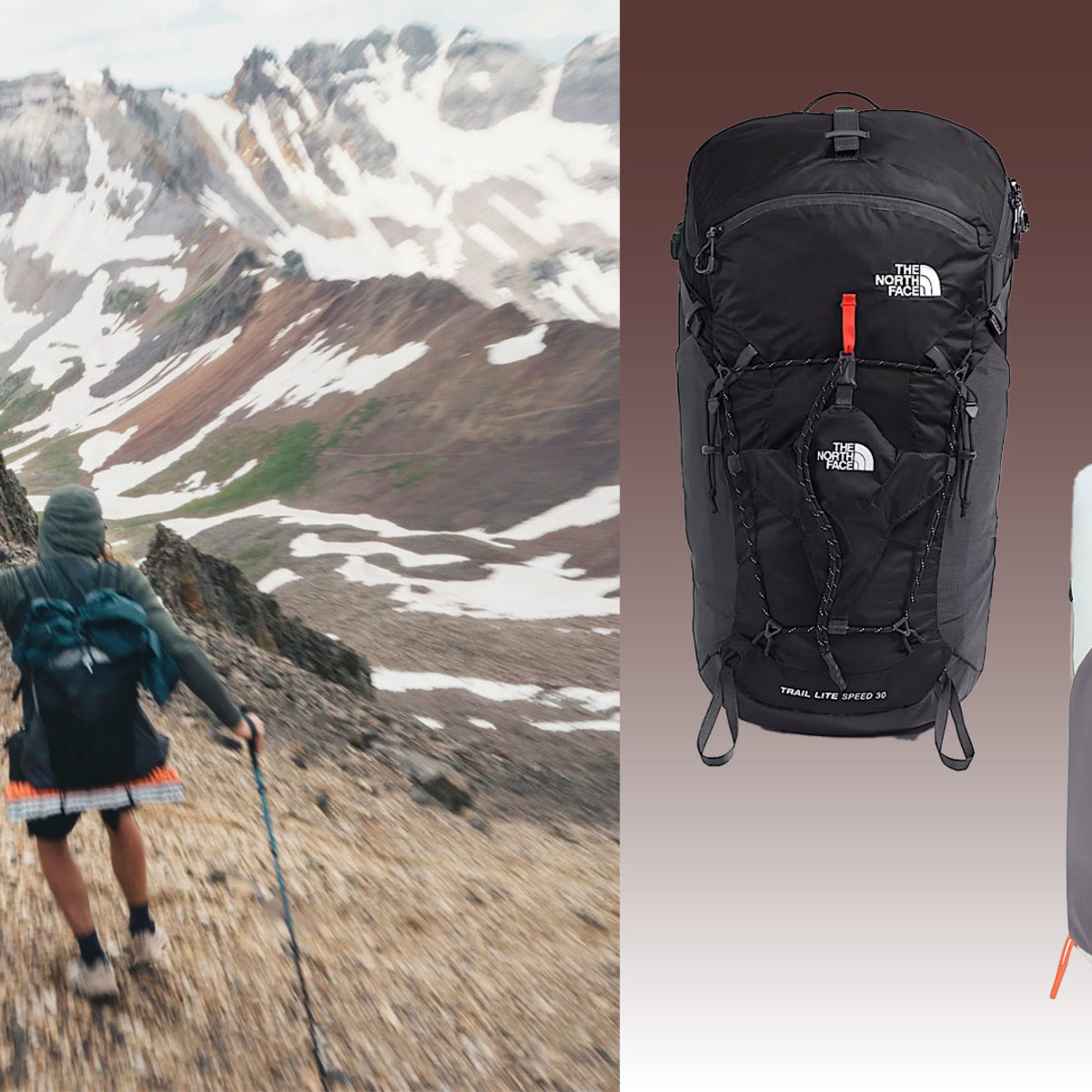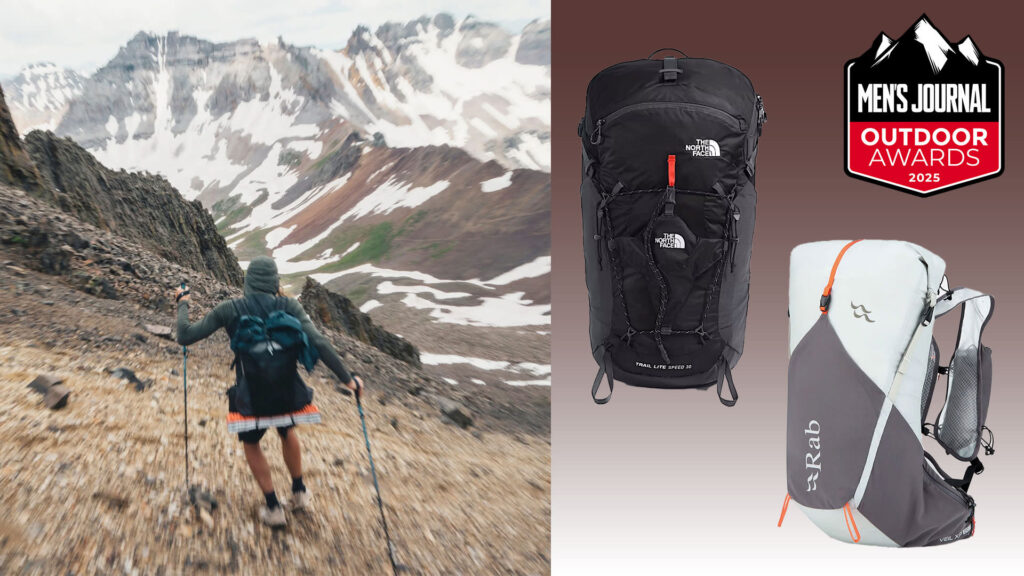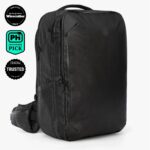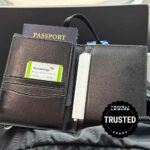Choosing the right backpack for hiking can make all the difference in your outdoor adventure. You want something comfortable, durable, and just the right size to carry your essentials without weighing you down.
But with so many options out there, how do you know which backpack is best for your needs? You’ll discover the key features to look for and tips to help you find the perfect hiking backpack that fits your style and keeps you moving forward with ease.
Keep reading—you’re about to make your hikes more enjoyable than ever.

Choosing The Right Backpack Size
Choosing the right backpack size is key for a good hiking trip. The size affects comfort, how much you carry, and your hiking speed. A backpack too big or too small causes problems. It can hurt your back or leave you without enough space. The right size fits your hiking plan and gear needs perfectly.
Daypacks For Short Hikes
Daypacks usually hold 10 to 30 liters. They are perfect for short hikes or daily walks. You carry water, snacks, a jacket, and small essentials. Lightweight and compact, daypacks keep you comfortable. A smaller backpack means less weight and more freedom.
Multi-day Backpack Sizes
Multi-day backpacks are larger, between 40 and 70 liters. They fit extra clothes, food, and camping gear. Choose size based on how many days you hike. Longer trips need more space for supplies. A backpack too large adds weight and slows you down.
Capacity And Weight Considerations
Capacity means how much your backpack can hold. Weight affects how hard it is to carry. Balance both when picking a backpack. Carry only what you need to avoid extra load. A lighter pack helps you hike longer and feel better.

Essential Backpack Features
Choosing the right backpack for hiking means knowing its key features. These features affect how comfortable and useful the pack will be on the trail. Good backpacks offer support, protection, and easy access to your gear. Understanding these elements helps you pick a backpack that fits your needs and hiking style.
Frame Types: Internal Vs External
Backpacks have either internal or external frames. Internal frames are built inside the pack. They give a sleek look and keep weight close to your body. This helps with balance and movement on rough trails. External frames sit outside the pack. They provide strong support for heavy loads and better ventilation. Choose internal frames for agility. Pick external frames for carrying heavy gear on long hikes.
Material Durability And Water Resistance
Durable materials protect your pack from tears and rough use. Look for nylon or polyester fabrics with strong weaving. These last longer on rocky or bushy paths. Water resistance keeps your gear dry during rain or river crossings. Coated fabrics and sealed zippers help stop water from getting inside. A backpack with these features keeps your belongings safe and dry.
Comfort And Fit Adjustments
Comfort is key for long hikes. Backpacks should have padded shoulder straps and hip belts. These help spread the weight evenly. Adjustable straps let you customize the fit. This prevents pain and chafing. Look for packs with ventilation panels to reduce sweating. A well-fitted backpack feels like part of your body, not a burden.
Specialized Backpack Types
Choosing the right backpack makes hiking easier and more fun. Specialized backpacks fit different hiking needs. These packs offer features that help hikers stay comfortable and carry gear safely. Knowing the types helps you pick the best one for your trip.
Each type focuses on a specific hiking style or need. From light loads to climbing gear, there is a pack designed for every adventure.
Ultralight Backpacks
Ultralight backpacks are perfect for hikers who want to move fast. These packs weigh very little and have simple designs. They hold just the essentials to keep weight low. Ideal for day hikes or short trips. Their minimal padding saves weight but can reduce comfort on rough trails.
Hydration-compatible Packs
Hydration-compatible packs include space for water bladders. They let hikers drink easily without stopping. These packs have tubes and clips for the hydration system. Great for long hikes in hot weather. Staying hydrated helps maintain energy and focus.
Technical Packs For Climbing
Technical packs are built for climbing and rough terrain. They have strong materials and extra straps for gear. These packs carry ropes, helmets, and tools securely. Designed to keep weight close to the body for balance. Perfect for hikers who plan to climb or scramble on rocks.

Packing Tips For Hiking
Packing for a hike can change your whole experience. A well-packed backpack feels lighter. It helps keep you safe and comfortable. Organizing your gear right saves time and energy. Here are some useful tips to pack better for hiking.
Weight Distribution Strategies
Keep the heaviest items close to your back and center. This helps balance your body and reduces strain. Place medium weight items around the heavy ones. Light items go at the top and outside pockets. Distribute weight evenly to avoid leaning or pain.
Organizing Gear Efficiently
Group similar items together. Use small bags or pouches for easy access. Put frequently used gear like snacks and maps on top. Store clothes at the bottom or in separate compartments. Keep your backpack neat to find things quickly.
Protecting Fragile Items
Wrap fragile items in soft clothes or bubble wrap. Place them in the center of your pack for protection. Avoid putting heavy things on top of breakables. Use hard cases for electronics or delicate gear. Careful packing prevents damage and keeps your gear safe.
Top Backpack Brands In 2025
Choosing the right backpack is key for a good hiking trip. In 2025, many brands offer great options. These brands stand out for quality, comfort, and durability. Whether you are a beginner or an expert, there is a brand that fits your needs. Even budget options can deliver good performance. Let’s explore the top backpack brands for hiking this year.
Popular Picks For Beginners
For new hikers, backpacks must be simple and comfortable. Brands like Osprey and Deuter lead here. Their packs offer easy adjustments and good support. They also have lightweight designs. These features help beginners carry their gear without strain. Many models include extra pockets for organizing small items.
High-end Options For Experts
Experienced hikers need backpacks that last and perform well. Arc’teryx and Gregory provide top choices. Their backpacks have advanced materials and strong frames. They offer perfect weight distribution and ventilation. These packs are great for long trips and tough trails. Experts appreciate the durability and extra features.
Budget-friendly Choices
Good hiking backpacks don’t have to be expensive. Brands like REI Co-op and Teton Sports offer affordable options. These packs still deliver good comfort and space. They use solid materials that resist wear and tear. Ideal for casual hikers or those on a budget. These backpacks help you enjoy hiking without overspending.
Maintenance And Care
Taking care of your hiking backpack keeps it strong and ready for many adventures. Regular maintenance helps your pack last longer and stay comfortable. It also protects your gear inside. A clean and well-kept backpack performs better on the trail.
Cleaning Your Backpack
Remove all items before cleaning your backpack. Shake out dirt and debris from pockets. Use a soft brush to clean stubborn dirt. Hand wash with mild soap and cold water. Avoid harsh detergents that can damage fabric. Rinse thoroughly to remove soap residue. Air dry in a shaded area, away from direct sun. Never put your backpack in a washing machine or dryer.
Repairing Common Damage
Small tears can grow if not fixed quickly. Use fabric patches or repair tape for holes. Sew broken straps with heavy-duty thread. Replace damaged buckles or zippers with new parts. Most repairs need simple tools like needles and scissors. Fixing problems early saves money and effort later.
Storage Tips Between Trips
Store your backpack in a cool, dry place. Avoid damp areas that cause mold and mildew. Keep it loosely packed or empty to keep its shape. Hang it or lay flat on a shelf. Do not store under heavy objects that cause creases. Check your pack regularly during storage to catch issues early.
Frequently Asked Questions
What Size Backpack Is Best For Day Hiking?
A 15-30 liter backpack is ideal for day hikes. It fits essentials without being too heavy.
How Important Is Backpack Weight For Hiking Comfort?
Light backpacks reduce strain and make hiking easier. Choose materials that balance weight and durability.
What Features Should A Hiking Backpack Have?
Look for padded straps, ventilation, multiple compartments, and water resistance for a better hiking experience.
Can Hiking Backpacks Carry Water Bottles Easily?
Yes, most have side pockets or hydration reservoir sleeves to keep water accessible during hikes.
How To Choose A Backpack For Multi-day Hiking Trips?
Select backpacks with 40-70 liters capacity, strong support, and space for gear and food.
Conclusion
Choosing the right hiking backpack makes every trip better. Think about size, comfort, and weight first. Pick a backpack that fits your body well. Check for enough pockets to keep gear organized. Don’t forget to consider the weather and trip length.
A good backpack helps you carry essentials easily and stay safe. Take your time to find one that suits your needs. Happy hiking starts with smart packing!






